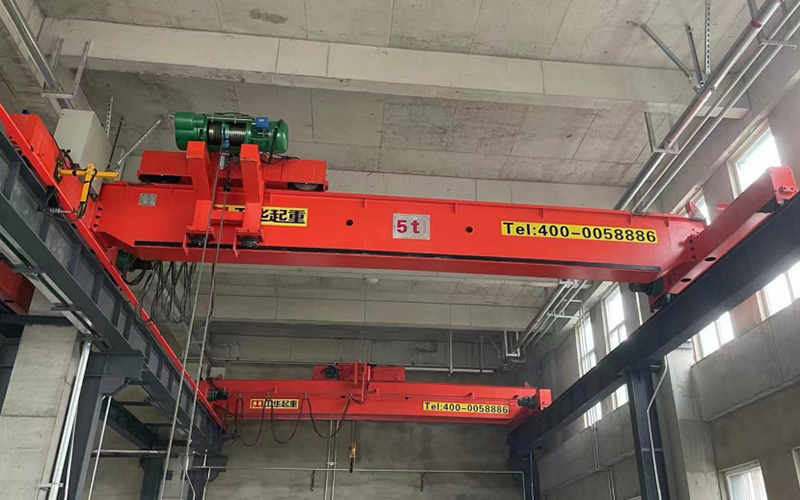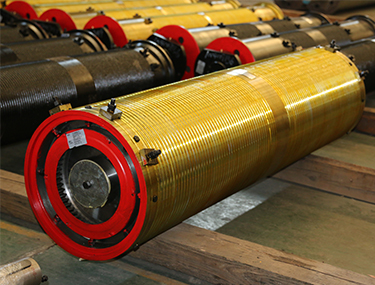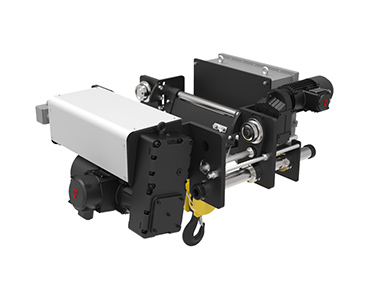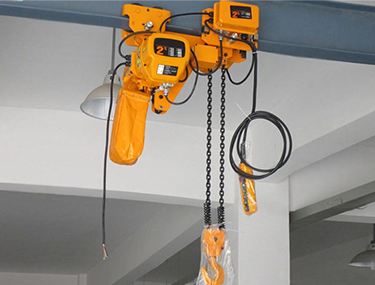In countries like Mexico and Brazil, electric wire rope hoists are lightweight, compact lifting devices powered by electricity, using a wire rope wound around a drum to lift, lower, and transport heavy loads. They feature a compact structure, easy operation, and high efficiency, making them a key tool for mechanized material handling in modern production.
Main Components of a
Wire Rope Electric Hoist
A typical electric wire rope hoist typically consists of the following core components:
Hoisting motor: The core power source, typically a conical rotor or disc motor with built-in braking, automatically braking in the event of a power outage for safety.
Reducer: Converts the high speed and low torque of the motor to the low speed and high torque required by the drum. This is crucial for ensuring the hoist's sufficient lifting capacity.
Drum: The component used to wind and store the wire rope. Its design and size directly affect the wire rope's capacity and lifespan.
Wire rope: The key flexible component that carries the load, typically composed of multiple twisted strands of steel wire, offering exceptional strength and toughness.
Hook assembly: Includes the hook and pulley assembly. The hook is used to suspend the load, while the pulley system reduces effort and allows for a change of direction (magnification).
Limiter (travel switch):
Upper limiter: When the
hook reaches its highest preset position, it automatically shuts off the lifting circuit to prevent a "top-up" accident.
Lower limiter (available on some models): Prevents excessive slack or tangling of the wire rope.
Casing: Protects the internal mechanical and electrical components, prevents dust and moisture intrusion, and ensures operator safety.
Control system: Includes a flashlight (button box) or remote control, which the operator uses to control the hoist's raising, lowering, and left and right travel (if installed on a trolley).
Main advantages of electric wire rope hoists:
High efficiency and labor saving: Compared to manual hoists, labor intensity is significantly reduced, significantly improving work efficiency.
Easy operation: Control via buttons or remote control is simple and easy to learn.
Flexible mobility: Traveling hoists can cover a large working area on a track.
Safe and Reliable: Equipped with multiple safety devices such as overload protection, limit switches, and electromagnetic brakes.
Adaptable: Available in a variety of types and specifications to meet the needs of different environments.
Wire rope electric hoists have a wide range of applications:
Factory workshops: Wire rope electric hoists are used for loading and unloading machine tools, assembly lines, and equipment maintenance.
Warehouse logistics: Wire rope electric hoists can be used for loading, unloading, and stacking cargo.
Construction: Lifting building materials, formwork, and pipes.
Ports and terminals: Wire rope electric hoists are used in conjunction with gantry cranes for handling containers and bulk cargo.
Applicable to almost any application involving heavy lifting, such as automotive manufacturing, the metallurgical industry, and power maintenance.
When selecting a Weihua electric wire rope hoist, consider the following key parameters:
Rated lifting capacity: The maximum weight to be lifted (e.g., 5 tons, 10 tons).
Lifting height: The vertical distance from the hook's lowest point to its highest point (e.g., 6 meters, 12 meters).
Duty class: Select based on frequency of use and load factor (e.g., M3, M4, M5). The more frequent the work, the higher the class required.
Operation mode:
Fixed: The hoist is stationary and can only lift vertically.
Moving: The hoist is equipped with an electric or manual trolley that can be moved on an I-beam track.
Power supply: Typically 380V, 50Hz, three-phase AC.
Usage environment: Is it an ordinary workshop, explosion-proof environment, or high-temperature environment?
Special requirements: Are dual-speed, remote control, or low headroom required?



